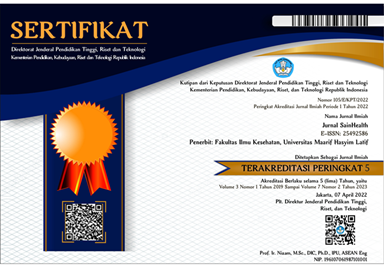ANALISIS FAKTOR KEJADIAN PHLEBITIS DENGAN SIMULASI MODEL FISIS ALAT TERAPI INTRAVENA
DOI:
https://doi.org/10.51804/jsh.v3i1.336.21-29Keywords:
intravenous, phlebitisAbstract
Intravenous therapy through long-term infusion is at risk for complications such as phlebitis. The influence of medical factors with a history of hypertension and mechanical factors based on the location of the position of infusion is the main study of the causes of phlebitis.One of the causes of phlebitis is the flow of intravenous fluids which is not proportional to the volume of infusion fluid. Intravenous Therapy Devices with the aim of assessing the physical phenomena modeling experiments intravenous therapy with the theory of fluid mechanics and prove the existence of linkage patient's blood pressure and height of intravenous fluid drop rate. The research method is experimental with the physical modeling of intravenous therapeutic devices. Physical model of intravenous therapy devices using a manometer to measure the pressure tube as diastolic pressure and variation on fluid infusion used was NaCl 0.9% and Glucose 5%. The results of this research was obtained diastolic pressure below 80 mmHg produced a drop rate of fluid infusion is almost constant with a maximum height of a standard intravena pole 1meter, while at an altitude above the altitude variation of normal use by 90 mmHg diastolic pressure with height variations of 1.1 to 1.3 meters yield drop rate a linear of infusion liquid to height variations. So to prevent turbulence of intravenous fluids (the cause of phlebitis) by increasing the location standard for infusionDownloads
Published
2019-03-23
Issue
Section
Articles
License
Jurnal SainHealth is licensed under Creative Commons Attribution 4.0 International License.
Under the following terms:
Attribution — You must give appropriate credit, provide a link to the license, and indicate if changes were made. You may do so in any reasonable manner, but not in any way that suggests the licensor endorses you or your use.
No additional restrictions — You may not apply legal terms or technological measures that legally restrict others from doing anything the license permits.
















